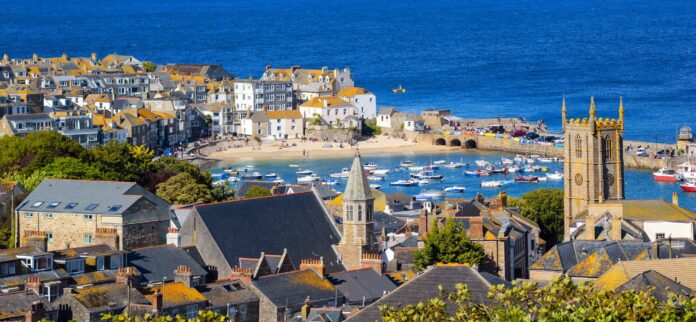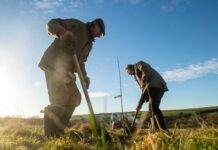St Ives has been evaluating the results of its Low Carbon Transport Strategy consultation.
The St Ives Low Carbon Transport Strategy is being funded and delivered as part of the St Ives Town Deal programme to help reduce the impact of vehicles on St Ives and introduce measures that encourage walking, cycling and the use of public transport.
The resident population in St Ives increases dramatically during the summer months when more than 500,000 day visitors and 220,000 staying tourists visit the town. Currently many opt to travel into the town by car, leading to significant congestion in the narrow streets around the town centre and harbour area.
The project has been allocated £5.5 million of Town Deal funding to create a Low Transport Environment (LTE). Developed in partnership with key stakeholders, the initial draft strategy contained several proposals aimed at reducing traffic congestion and parking demand in the town centre, enhancing public transport options and accessibility, improving air quality and health outcomes for residents and visitors and supporting local businesses by creating a more attractive and vibrant town.
Many of the proposals outlined in the first phase of the strategy, including the junctions at Malakoff, Stennack, Zennor, and Halsetown, and the station car park, the widening of footways and pavements and the improvements in public transport, were supported by members of the Town Deal Board in February.
However, it was agreed that further work was needed on the development of the one way system and some elements of the Low Traffic Environment.
A decision on the final version of the strategy will be made at the next meeting of St Ives Town Deal Board in May.
Over 450 people took part in consultation. The majority of those responding via the survey (69.9%) said that the environment in the town centre needed changing and improving, with most supporting the principles of improving walking and cycling facilities, reducing level of traffic and improving public transport. However, there were different views on how this should be achieved.
After reviewing the feedback from the consultation and listening to the comments and concerns subsequently raised, the project team have made some changes to the original proposals.
“We would like to thank everyone who took part in the consultation and worked with us to identify possible problem areas, and are now helping to work towards solutions ,” said Johnnie Wells, chair of the Transport Sub Committee.
“Everyone knows that traffic is an issue in St Ives and there are no easy answers; the consultation reinforced that there is a mandate for change and that is what we are trying to achieve.”
Louis Gardner, Cornwall Council cabinet portfolio holder for economy, said: “This Town Deal funding is designed to provide a catalyst for making improvements that will benefit residents for years to come. It’s important that residents have their say on proposals for their community and, as we can see with the response to the low carbon transport strategy, those views have been taken into account and changes made as a result.”
Following concerns raised about the use of physical restrictions , the project team are now looking into the use of alternative methods to discourage people without legitimate reasons from driving into the town centre during certain periods.
This means that it is unlikely physical restrictions/barriers will be used to prevent access to the town centre. Although the project team expect that the wider measures to improve public transport and traffic management changes around the town will, by design, reduce the number of vehicles entering the town centre, they are hoping the community will play their part in supporting the Low Traffic Environment by changing their behaviour.
“Whilst the majority of those responding to the consultation supported the principle of restricting access to the town centre at busy times, the logistics of ensuring access for those who need it when they need it has proved very difficult for an unmanned system,” said Johnnie Wells. “I am delighted that, in response to those concerns, we are going to look at other solutions for that part of the project.”
The proposal to provide additional parking outside the town centre to encourage visitors and commuters to continue their journey by bus, rail, or walking or cycling, was largely welcomed during the consultation. However, some concerns were raised about the impact of changes to parking in the town centre on the local community. Although there will be a focus on discouraging ad hoc and dangerous parking in the town centre, and a small reduction in overall parking, the aim is to maintain or increase parking spaces for local residents through the use of permit only parking.
Other issues identified during the consultation included the need to improve public transport, particularly at evening and weekends.









